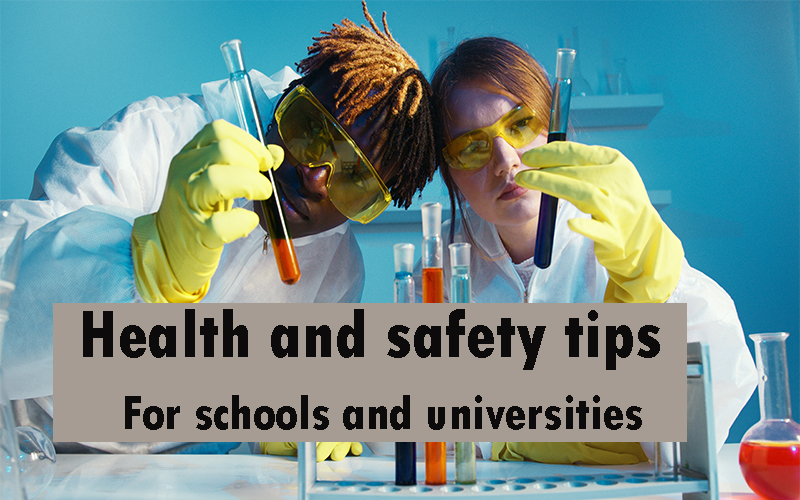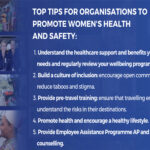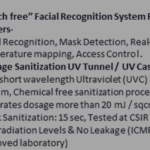Health and safety tips for schools and universities by International SOS. The importance for education organizations to prioritize the health, security and wellbeing of their community.
Academic institutions are gearing up to welcome students and employees back to campus. With the world navigating the impacts of various global health crises and security concerns, International SOS, the world’s leading health and security company, highlights the importance for education organizations to prioritize the health, security and wellbeing of their community.


During COVID-19, International SOS saw a 60% increase in requests for information and assistance within the education industry. The COVID-19 pandemic affected education globally and created the largest disruption of education systems in history, affecting nearly 1.6 billion learners in over 190 countries. Closures of schools, universities and other learning spaces impacted 94% of the world’s student population.1, By learning from the challenges posed by the COVID-19 pandemic, educational institutions can play a pivotal role in minimizing disruptions to learning. This may include implementing comprehensive health and security guidelines which will not only safeguard the wellbeing of students and staff but also enable a swift and coordinated response to future crises.
Dr Vikram Vora, Medical Director for the Indian Subcontinent at International SOS, comments “The start of a new academic year is a time for enthusiasm for students and staff in educational institutions. With the current health and security landscape constantly changing and presenting newer challenges, it is critical to maintain the agility and readiness to respond to them. Institutions which recognize these risks would do well to put into place a comprehensive plan to manage future pandemics and other damaging health events.
A Pandemic Preparedness Plan for instance, can minimise the potential impact of a future global or local health event and help to maintain continuity of learning using adaptable online platforms and hybrid teaching models.
Following health guidelines contained in the plan significantly reduces the risk of illness and infections on campus. Additionally, measures like adopting enhanced hygiene practices, monitoring indoor air quality, creating awareness and providing support for mental wellbeing can all contribute to a holistic and safer campus experience for everyone.”
Udit Mehta, Executive Vice President & Director of Operations at International SOS adds “Post-pandemic, the risk environment for scholastics institutions has evolved dramatically necessitating a complete review of mitigation frameworks. The impact is particularly multiplied for overseas study programmes involving third parties with significant changes in the socio-economic and geo-political risk patterns warranting a complete renewal of risk assessments to ensure student safety and wellbeing.
A review of crisis management and emergency response plans of partner institutions providing study overseas programs should be a statutory inclusion for schools and universities reviewing third-party providers. The plans need to be inclusive of the specific needs of foreign students including initiation of support from local consular authorities as well as host institution capabilities in addressing risks. Simultaneously the adoption of a principled approach to risk management including the provision of crisis management mechanisms and knowledge enhancement on resilience to stakeholders is critical for educational institutions to ensure a safe return to campus.”
International SOS shares the following health and safety tips for schools and universities to consider when preparing for return to campus:
1. Implementing health guidelines: Collaborate closely with local health authorities and experts to implement comprehensive health guidelines.
2. Healthcare access: Ensure students, staff and faculty have access to healthcare services when needed.
3. Uplift mental health support for both staff and students: Offering mental health support and counselling services and resources to address the challenges that may arise during the return to campus life. Regularly communicate to students and faculty on the support available and how to access it.
4. Enhancing hygiene practices: Encourage frequent handwashing, provide sanitisation stations across campus and increase airflow and ventilation to limit the spread of infections.
5. Comprehensive risk assessments: Conduct thorough risk assessments to identify potential health and safety hazards on campus and develop actionable plans to address them effectively.
6. Educating the community: Ensure effective communication channels to disseminate accurate and up-to-date information on health and safety protocols to students, faculty, and staff. Transparent communication builds trust and enables individuals to take proactive measures.
7. Emergency preparedness: Establish clear emergency response plans, ensuring everyone knows the correct actions to take in case of health crises or other emergencies.











